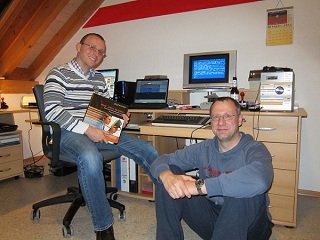- Details
- Hits: 3020
Today, I started with the most ambiguous assembler project I ever did. In the 1990s, I used ATMAS. The largest project was around 1,000 lines of code. Visdom II took six months of coding on an Amiga 500 cross-development system with about 2,000 lines of code. Thanks to MADS and WUDSN IDE, I could create Silly Things within three months, and the result has 10,000 lines of code.
The new project exceeds this in two aspects:
- First, it is in a class of programs in which I've tried to succeed many times - and I failed.
- Second, the first estimations show that more than 17,000 lines of code will exist.
But why the hell do I think it can be done? Well, this is something I have been dreaming of for years. I feel I now have the experience to try a teenage dream. Also, my tools are so good that I can use a different approach to tackle the complexity. Unfortunately, some legal aspects have to be clarified first. If I am unlucky, the legal aspects will prevent my project. Let's wait and see...
- Details
- Hits: 3287
When Grey and I discussed the compo rules for the VCS compo, I also suggested limiting the cartridge size to 8k. On the one hand, 8k was the typical size of most VCS cartridges. On the other hand, 8k can be filled within some weeks so that I won't spend so much time on the demo. All effects were ready after six weeks. And they took 12k. Damn. Consequently, I spent four more months reworking and coding to squeeze it into the 8k boundary. At the same time, I was hoping and waiting for Jakub Husak to complete the tune for which I had reserved 1k. The first deadline passed, and Jakub sent the final music on the night when the extended deadline also passed. After 1 hour of tracking down a bug in the player routine, it compiled correctly and reported 335 bytes free. WHAT? 335 bytes free? I cannot release an 8k demo with 335 bytes free. So I sat down and added most of the stuff and details that got removed in the months before. Four hours later, i.e., 2 hours after the extended deadline, I sent my mail to Grey ... who had extended the extended deadline meanwhile ... thanks ;-)
The result is ISO, which went 1st place in the first VCS-only demo compo in history.
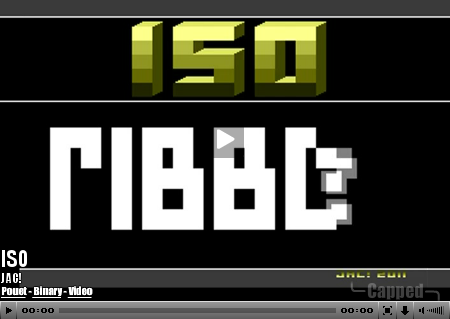
It also climbed to 3rd place at the top of the month of Pouet and received great feedback. Thanks for all your votes!
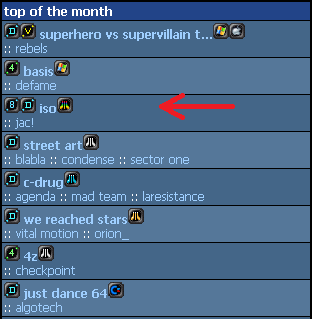
- Details
- Hits: 3200
In March, Grey^MSB contacted me and asked if I would contribute a demo for Silly Venture 2k11. Well, creating Silly Things took the whole three months of my parental leave for my youngest daughter. Therefore, my immediate reply was: Sorry, I cannot beget another child to have enough time for a new release. Then he told me that he already has two possible entries on VCS and was looking for a third one to hold the first VCS-only demo compo in history. My first thought was: OK, the worst then is becoming third - that's cool. I immediately started coding on VCS, and my first VCS demo, BeamRacer, was released in the Oldschool 4k demo compo at Revision 2011. There, I had the same problem as the two VCS demos in the Silly Venture 2k10 combined demo compo: 4k Amiga demos look more impressive, especially if most people don't even know about the VCS and its restrictions. So it ranked 5th in the compo. Not bad for a first release, though. Also, getting it on the big screen was a lot of trouble. Therefore, I had to tweak the faster and more colorful final NTSC version (first picture) into a slower and less colorful PAL version for the beamer (second picture).
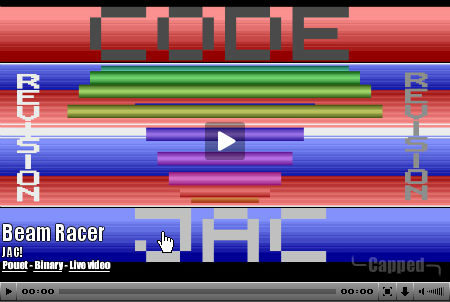
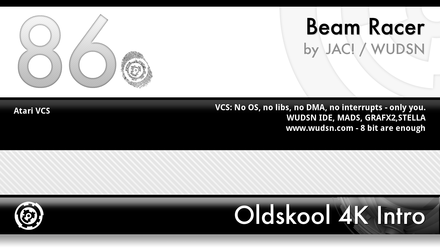
- Details
- Hits: 3556
The JHV (AGM) is over, and here are some impressions. I arrived just in time after getting lost in the "Palz" due to my outdated navigation system. It was a joyful day playing Warlords and impressing people with the preview of my new VCS demo for the Silly Venture 2k11. Later in the evening, mega-hz, hias, and I discussed the top-secret new hardware developments for the 2012 .. and 2013 hardware contests. Thanks to the excellent reaction of mega-hz, the top-secret prototype is hidden behind his hand and a glass of beer.
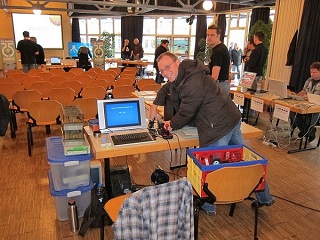
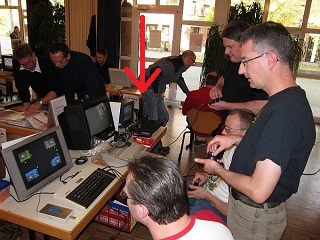
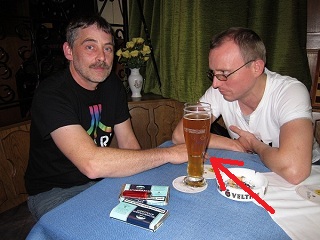
- Details
- Hits: 3129
One of the Atari 8-bit's most distinctive features is that the program recorder uses one channel for serial data and one for typical sound. This means that you can replay music and spoken words during loading. Based on this feature, Atari released several educational software titles. One of them is the "Atari Speed Reading" course from 1981. In the picture below, you can see Tigerduck and me after we spent the whole evening trying to sample the first tape using a notebook with AudaCity, a hi-fi system, and recoding it back on an audio tape again. It took quite a while, but finally, we found the proper recording and re-recording settings to make it work on the Atari again.